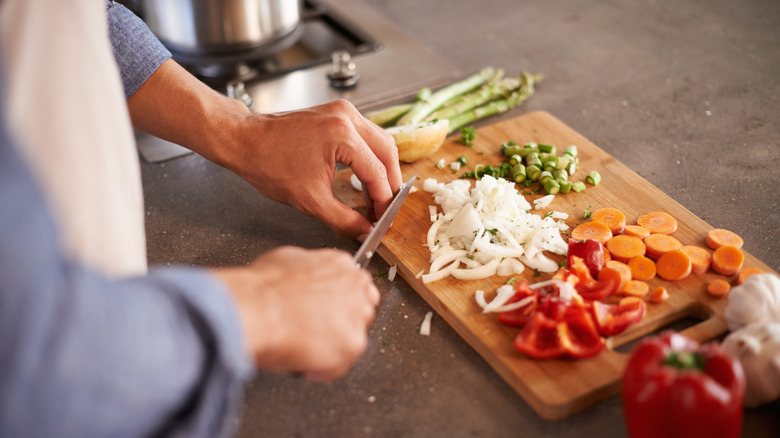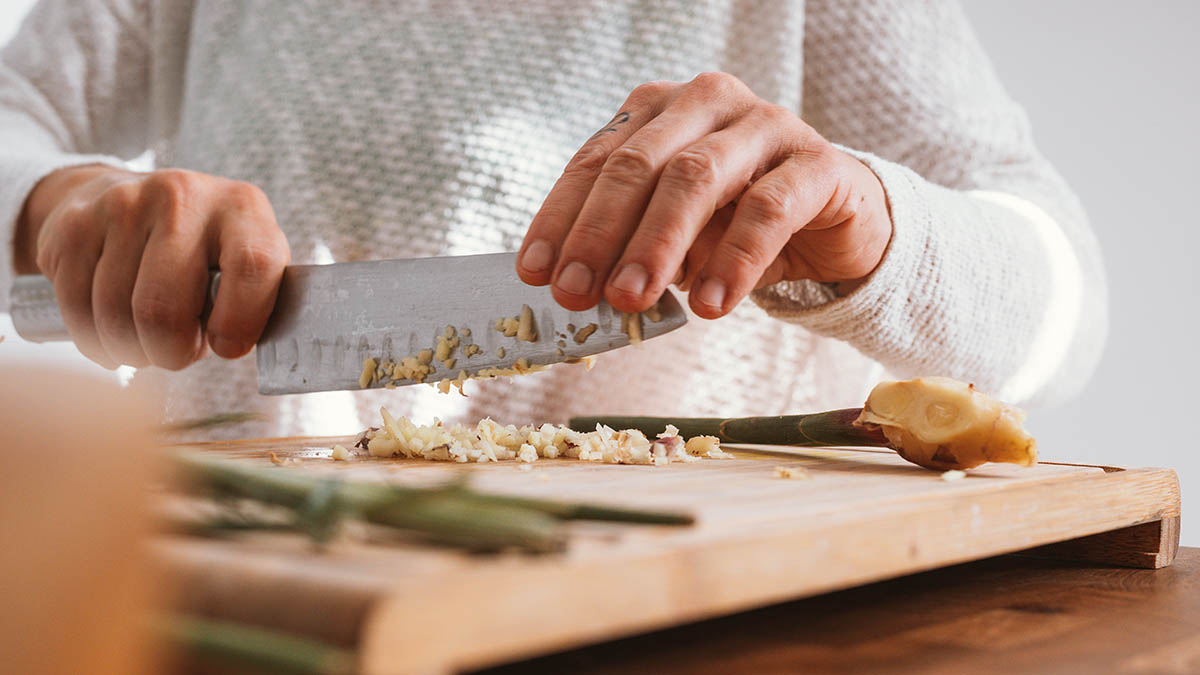In every well-equipped kitchen, cutting boards play a crucial role. Knowing when should you use a plastic cutting board can make a significant difference in food safety and kitchen efficiency. For kitchen professionals, making the right choice between plastic and other materials is critical.

Why Consider a Plastic Cutting Board?
There are various reasons why you might choose a plastic cutting board over other types. Understanding these can help you make informed decisions.
Food Safety and Hygiene
Plastic cutting boards are often considered more hygienic than wood. They’re non-porous, meaning they don’t absorb bacteria from meat juices and other liquids, making them a safer option in many situations.
Easy to Clean
One of the most significant benefits of plastic cutting boards is how easy they are to clean. They can be washed in the dishwasher, which sanitizes them thoroughly. For tips on maintaining cutting boards, check out this cleaning guide.

When to Use a Plastic Cutting Board: A Detailed Breakdown
Understanding when to use a plastic cutting board is essential for maintaining food safety and efficiency in your kitchen.
Handling Raw Meat
Use a plastic cutting board when you’re cutting or preparing raw meat. The non-porous surface prevents bacteria from getting trapped, reducing the risk of cross-contamination. Learn more about food safety here.
Chopping Vegetables and Fruits
While plastic boards are great for meat, you might wonder about vegetables and fruits. They’re also suitable for these as they’re easy to clean and won’t affect the food’s taste or safety.

Advantages of Using a Plastic Cutting Board
Plastic cutting boards offer several advantages that make them an essential tool in any kitchen.
Durability and Affordability
Plastic cutting boards are durable and affordable, making them a fantastic choice for both professional and home kitchens.
Knife-Friendly Surface
These boards are gentle on your knives, maintaining their sharpness over time. For more tips on kitchen tools, visit this handy guide.
How to Maintain Your Plastic Cutting Board
Proper maintenance ensures the longevity and efficiency of your cutting board.
Regular Cleaning Routine
Ensure you clean your plastic cutting board thoroughly after each use. This practice helps to eliminate any bacteria and maintain hygiene.
Removing Stains and Odors
If your board gets stained or retains odors, a mixture of baking soda and water can help. Scrub the board and rinse thoroughly.
Replacing a Worn-out Board
Watch for signs of excessive wear and replace your cutting board when it becomes excessively scarred, as deep cuts can harbor bacteria despite cleaning efforts.
Comparing Cutting Boards: Plastic vs. Other Materials
Choosing the right cutting board material is essential for your specific kitchen needs.
Plastic vs. Wood
Wood boards are elegant and durable. However, they’re more porous and harder to sanitize properly, which is where plastic boards shine.
Plastic vs. Bamboo
Bamboo is another popular material. It’s eco-friendly and durable, but like wood, it can harbor bacteria.
Expert Tips for Using a Plastic Cutting Board
Maximize the benefits of your plastic cutting board with these expert tips.
Designate Separate Boards
To prevent cross-contamination, use separate boards for different food types. For example, have one board for meat and another for vegetables.
Proper Storage
Store your boards properly to keep them dry and clean. Avoid stacking them while they’re still wet.
Regular Inspection
Regularly inspect your cutting boards for deep cuts and warping. Replace them when necessary to maintain hygiene.
The Role of Plastic Cutting Boards in a Modern Kitchen
Plastic cutting boards have become indispensable in modern kitchens due to their efficiency and safety features.
Compatibility with Modern Kitchen Appliances
Plastic cutting boards are compatible with various kitchen appliances, including dishwashers, making them convenient for modern kitchens.
Use in Professional Kitchens
In professional kitchens, where hygiene and efficiency are paramount, plastic cutting boards are preferred for their non-porous and easily sanitized surface.
Innovations in Plastic Cutting Board Technology
Recent innovations have made plastic cutting boards even more desirable.
Anti-Microbial Coatings
Some modern plastic cutting boards come with anti-microbial coatings that further enhance their hygiene.
Eco-Friendly Options
There are now eco-friendly plastic cutting boards made from recycled materials, offering a sustainable option for environmentally conscious users.
Conclusion: Why Plastic Cutting Boards Are a Kitchen Must-Have
Understanding when you should use a plastic cutting board can substantially improve your kitchen’s safety and efficiency. Their durability, hygiene, and affordability make them indispensable.
For more information on cutting boards, check out this comprehensive guide.
FAQs
1. Can plastic cutting boards be sanitized in a dishwasher?
Yes, plastic cutting boards can be easily sanitized in a dishwasher, which makes cleaning them very convenient.
2. How often should I replace my plastic cutting board?
It’s recommended to replace your plastic cutting board when you notice deep cuts and scratches that could harbor bacteria.
3. Are plastic cutting boards safe for cutting all types of food?
Yes, plastic cutting boards are suitable for cutting all types of food, including meat, vegetables, and fruits. However, it’s a good practice to designate separate boards for different food types to avoid cross-contamination.
As an Amazon Associate, I earn from qualifying purchases.


